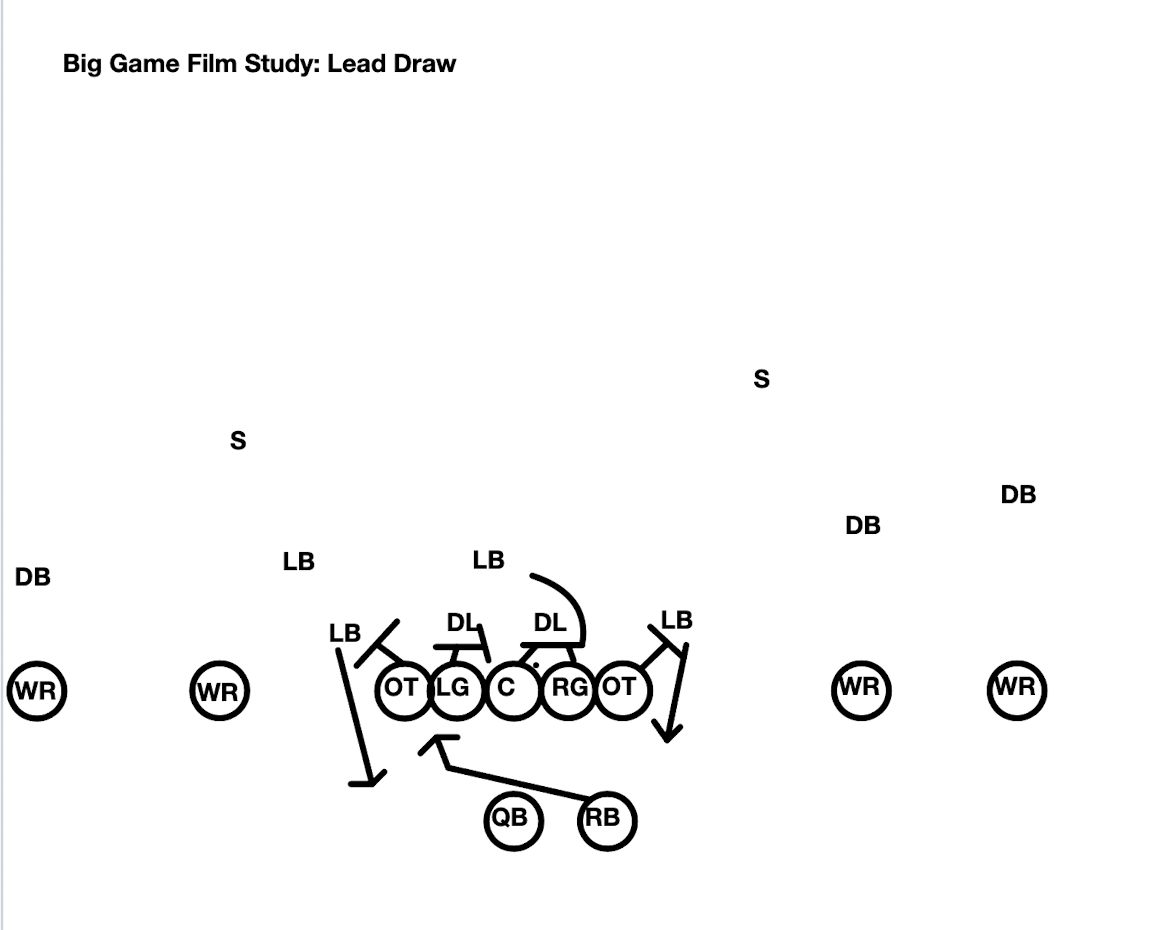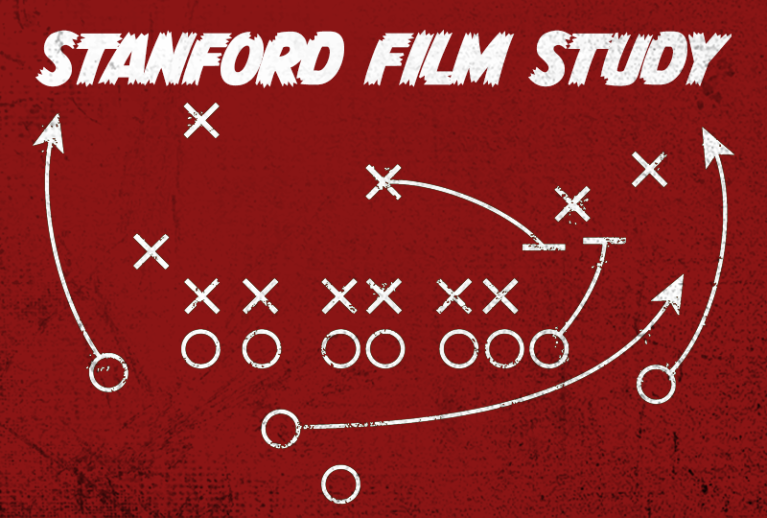Heading into the 125th anniversary of the Big Game, this installation of Stanford Film Study will highlight some of the most common play concepts that both Stanford (3-7, 1-7 Pac-12) and Cal (3-7, 1-6 Pac-12) have utilized this season. This article will analyze two plays from each team: one run play and one pass play.
Switch concept
The switch concept is a two-man route combination intended to get a natural rub on one of the defenders. It is especially effective against man coverage. The outside receiver will try to get inside leverage while the inside receiver will attempt to get outside leverage. The inside receiver will run a wheel route on the sideline while the outside receiver runs a post route.
Below is a diagram of Stanford running a switch concept against UCLA a few weeks ago. Although the rub is successful, and senior receiver Elijah Higgins is able to get open, the defender in coverage is able to jar the ball loose from Higgins’ hands and force a fourth down.
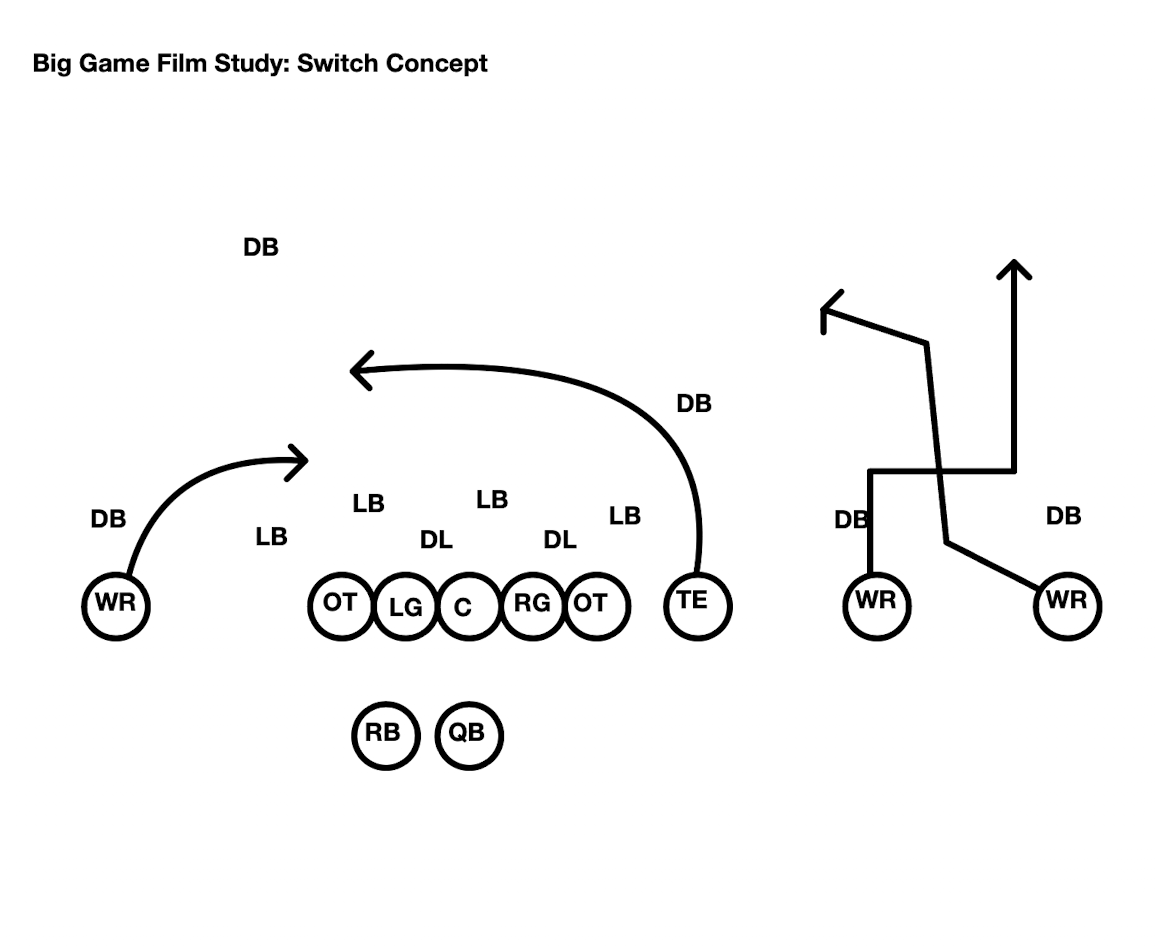
Duo
Duo is an inside gap-scheme run that is commonly run at all levels of football. The offensive line attempts to block away from the running back’s aiming point, while an offensive tackle is usually present to kick out an edge defender. Duo is often confused with inside zone, as both look very similar to each other. The difference, however, is that the running back’s aiming point is in the same direction as the offensive line’s movement in inside zone, while it’s the opposite in duo.
Below is a diagram of the Cardinal running duo against Utah this past weekend. While the play is designed to open a crease in the B gap, miscommunication on the left side of the offensive line coupled with a blitz from the safety causes the play to fail.
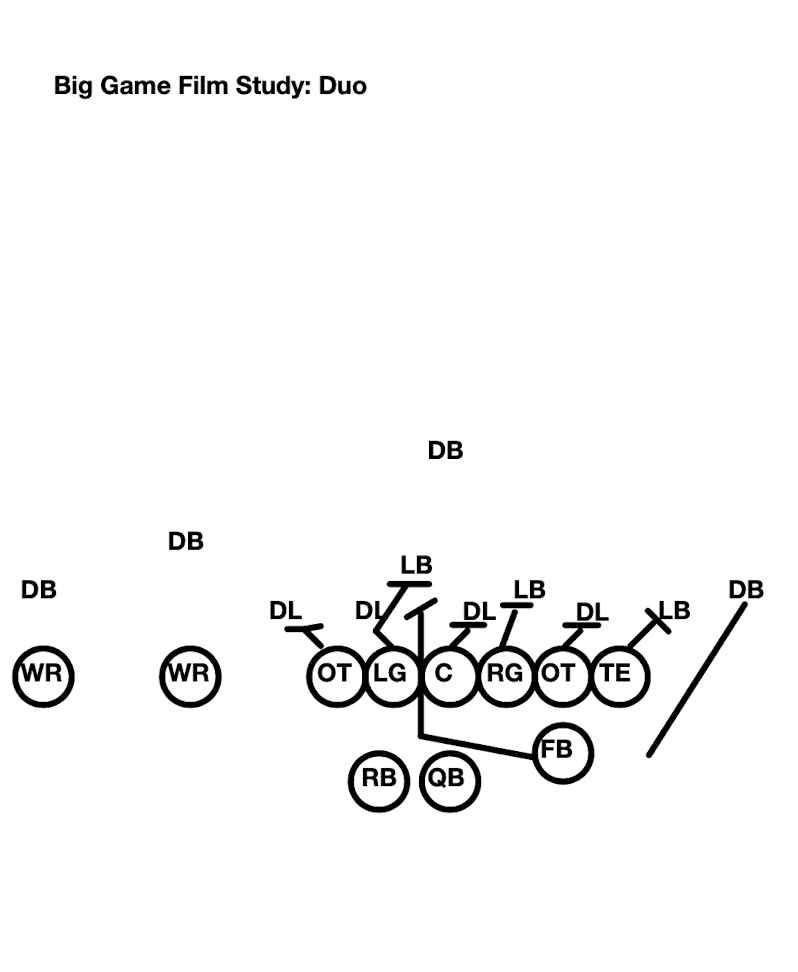
Double Slant
Cal’s west coast offense utilizes a lot of quick game passing concepts, similar to Stanford before the slow-mesh run-pass option took over this season. The double slant is one of the key patterns that Cal runs to beat man and cover two zone coverage. In zone coverage, double slant attempts to attack the curl-flat defender and put him in a bind. If he floats out to cover the outside slant route, the quarterback will throw to the inside slant. Meanwhile, if he drifts inside, the quarterback will throw to the outside slant.
On the other side of the formation, the Golden Bears will usually tag the double slant with the Dragon concept, another quick game concept designed to beat Cover 3.
Below is a diagram of Cal running the concept against Oregon State earlier this year. Even though the inside linebacker fakes the pass rush and falls back into his vertical seam drop, quarterback Jack Plummer still has a window to fit the ball into his receiver on the inside slant.
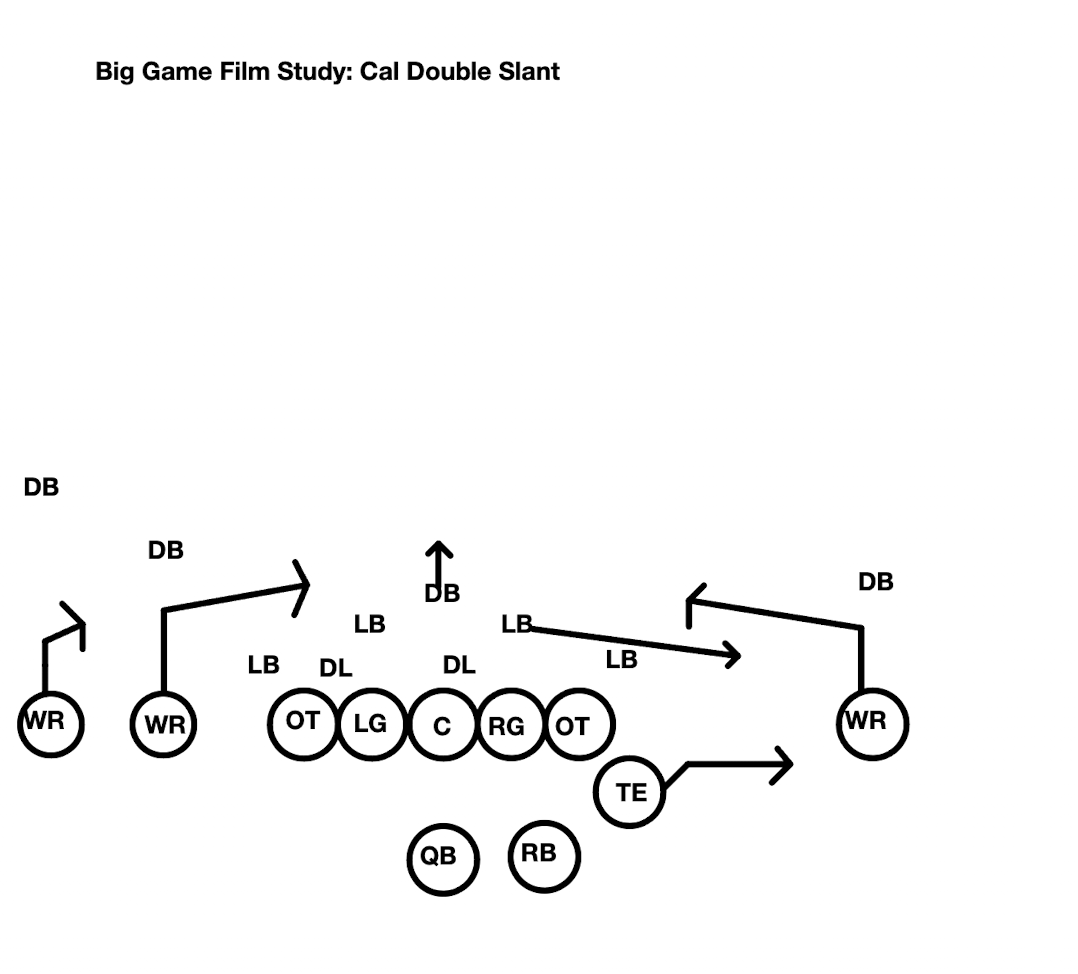
Lead Draw
To get star running back Jadynn Ott the ball on carries, Cal employs the lead draw run concept in lots of their run packages. The lead draw play attempts to make linebackers less aggressive at the point of attack by delaying the handoff, making it seems as if the quarterback will pass the ball. This gives time for the offensive line to work their way up to linebackers at the second level. Oftentimes, the lead draw will utilize double teams on the tackles, but sometimes the center or guards immediately work their way up to the linebackers.
Below is a diagram of the Golden Bears using lead draw against USC two weeks ago. Ott is able to score a touchdown on this play thanks to the center and left guard’s blocks on the linebackers.
